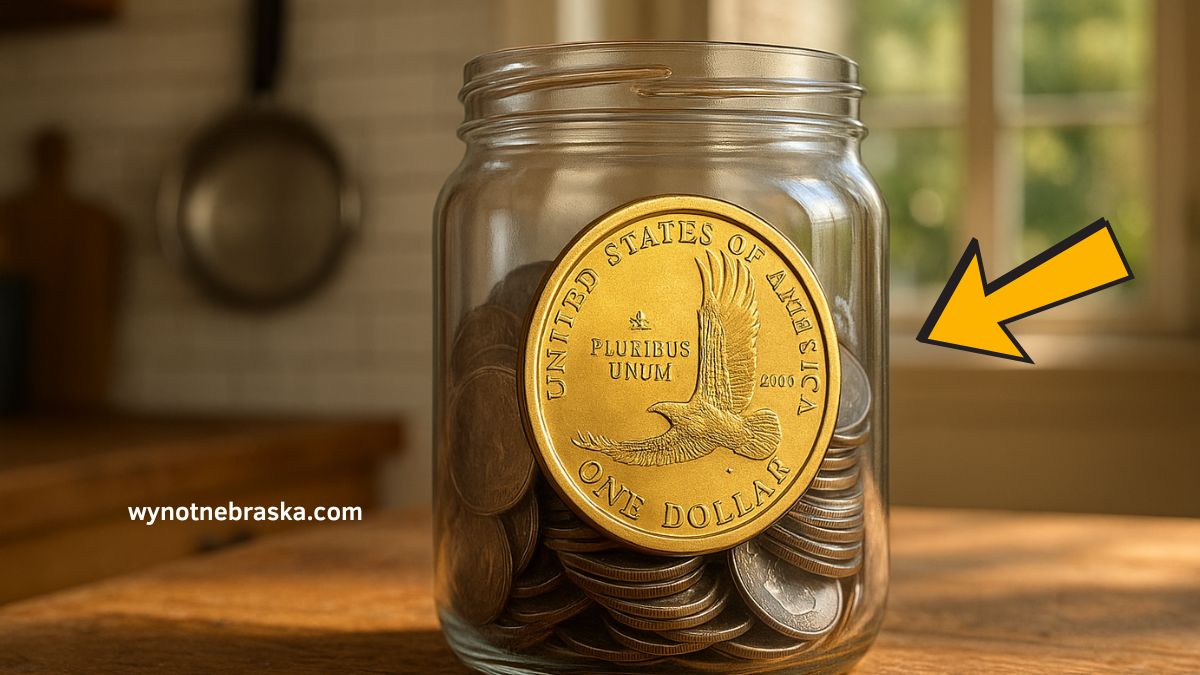A stunning discovery has made waves in the numismatic world—a rare 2000 Sacagawea dollar with the “Cheerios” reverse was found tucked away in a kitchen coin jar and recently sold for $44,500 at auction. What looked like an ordinary golden dollar turned out to be a small fortune in disguise.
What Is the 2000 Sacagawea “Cheerios” Dollar?
The 2000-P Sacagawea dollar was introduced to promote a new era of U.S. currency, but what makes the “Cheerios” dollar special is its prototype reverse design.
In early 2000, about 5,500 Sacagawea dollars were included in Cheerios cereal boxes as part of a promotional campaign. These were early strikes, and many had a unique reverse eagle design with enhanced tail feathers—a detail that set them apart from the standard coin.
Most people who received one of these coins didn’t realize they held something unique. But collectors and grading services now value this error-turned-variant as one of the most desirable modern U.S. coins.
Key Features of the “Cheerios” Dollar
| Feature | Details |
|---|---|
| Year | 2000 |
| Mint Mark | P (Philadelphia Mint) |
| Design Variant | Enhanced tail feathers on the eagle |
| Distribution Method | Cheerios promotional boxes (2000) |
| Estimated Quantity | Around 5,500 coins |
| Average Market Value | $5,000 – $20,000 |
| Recent Auction Sale | $44,500 (Kitchen Jar Discovery) |
How Was the Coin Found?
The coin surfaced when a retiree cleaning out an old kitchen jar noticed a golden dollar that looked slightly different from others. Unaware of its value, they brought it to a local appraisal event, where a coin expert quickly identified the unique reverse design.
After certification confirmed it was a true Cheerios reverse Sacagawea dollar, it was placed in an online auction where bidding soared, ultimately closing at $44,500 due to its excellent condition and sharp strike.
Why Is This Coin Worth So Much?
Several factors drive the high value of the Cheerios Sacagawea dollar:
1. Rarity
Only about 5,500 were ever distributed. Today, far fewer remain identifiable, making them extremely rare in the modern coin market.
2. Distinctive Design
Unlike the standard 2000 Sacagawea dollar, the Cheerios version features a high-detail, raised feather pattern on the eagle—clear and easy to distinguish for trained eyes.
3. Historical Significance
As one of the earliest strikes of the Sacagawea dollar series, it represents an important transitional moment in U.S. coinage history.
4. Condition
The recently discovered coin was in near-mint condition, having spent decades shielded from wear—an important factor in driving up collector value.
How to Identify a “Cheerios” Sacagawea Dollar
If you suspect you may have one of these valuable coins, here’s what to look for:
- Year and Mint Mark: The coin must be dated 2000 with a “P” mint mark.
- Eagle Tail Feathers: On the reverse, the eagle should have clearly defined, bold feather lines extending in greater detail than the normal issue.
- Packaging: While not required, original Cheerios packaging adds extra proof and potential value.
- Certification: Submit your coin to a third-party grader for official verification.
Who Should Check Their Coins?
If you saved a 2000-P Sacagawea dollar from the early 2000s or received one in a cereal box, now is the time to check. Many of these coins ended up in collections, jars, or casual circulation and could still be hiding in plain sight.
Even if the coin appears ordinary, it’s worth a closer look—especially with modern lighting and magnification. You never know what treasure might be hiding in your spare change.
The sale of a 2000-P Cheerios Sacagawea dollar for $44,500 is a powerful reminder that everyday objects can hold unexpected value. Whether you’re a seasoned coin collector or someone cleaning out old drawers, it pays to look carefully.
With only a limited number in existence, this rare variant continues to fetch top dollar and remain a coveted prize in the numismatic world.
Check your jars, check your pockets—you might be sitting on gold without knowing it.
FAQs
How many of these Cheerios dollars are still around today?
Estimates suggest that only a few hundred have been identified and graded, making them ultra-rare among modern U.S. coins.
Can I still find one in circulation?
It’s unlikely but not impossible. Some may still be mixed with regular currency, especially in private jars or old coin rolls.
How can I get my Sacagawea dollar authenticated?
Submit it to a reputable coin grading service such as PCGS or NGC, which specialize in authenticating and grading rare U.S. coins.
